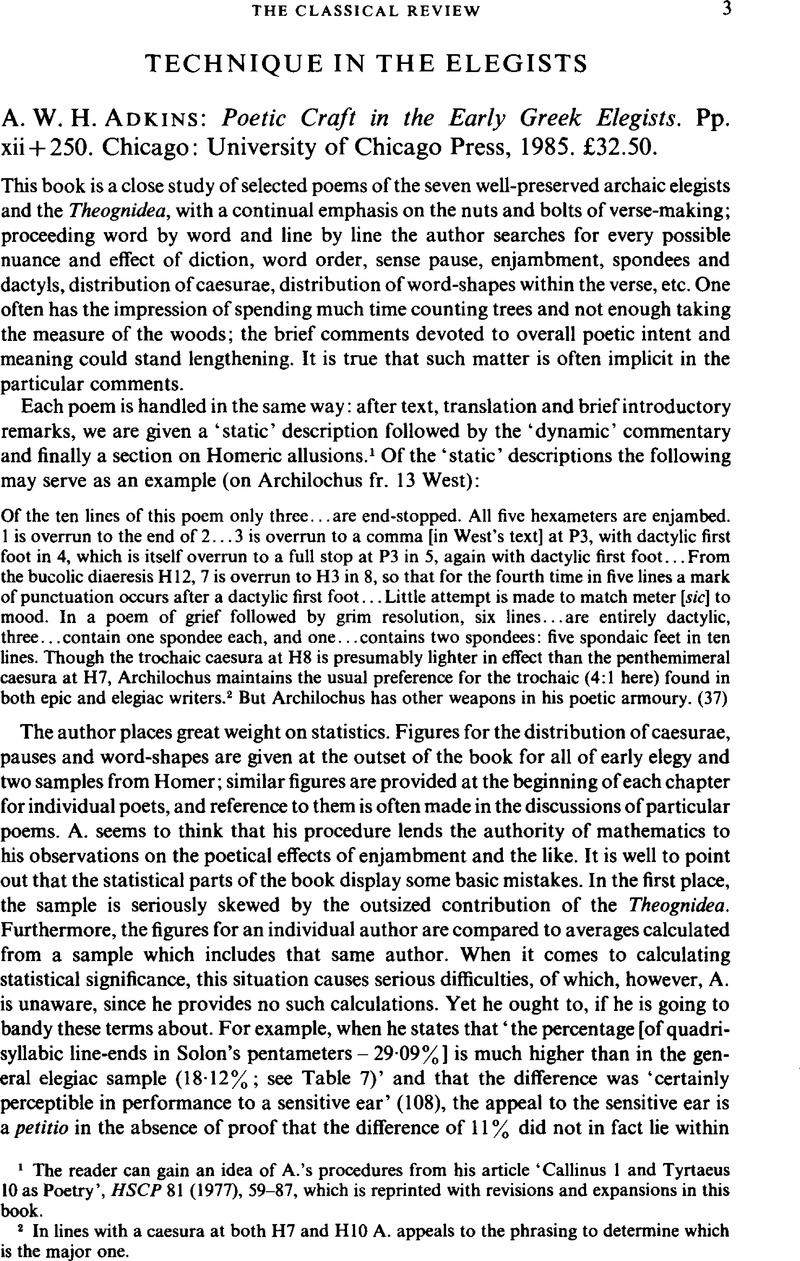No CrossRef data available.
Published online by Cambridge University Press: 16 February 2009

1 The reader can gain an idea of A.'s procedures from his article ‘Callinus 1 and Tyrtaeus 10 as Poetry’, HSCP 81 (1977), 59–87Google Scholar, which is reprinted with revisions and expansions in this book.
2 In lines with a caesura at both H7 and H10 A. appeals to the phrasing to determine which is the major one.
3 The phrase ‘mere random distribution’ is puzzling. Perhaps he means ‘even distribution’ or ‘only random distribution’. Even so confusion remains. Your figures for different parts of your sample are bound to go together to produce an average whether they vary in random manner or not; if this average is different from that of your control sample then it looks as if your sample differs in some way in respect of the phenomena being tested, and is therefore not a random but a biased sample and useless for testing. But that the Theognidea is itself two-thirds of the supposed control means that all such talk is pointless.
4 See the review of Rissman, L., Love as War: Homeric Allusion in the Poetry of Sappho (Königstein, 1983)Google Scholar in CR 26 (1986), 301Google Scholar; The Nature of Early Greek Lyric (University of Toronto Press, 1987), ch. 1.Google Scholar
5 I am grateful to my colleague in the Department of Statistics, G. W. Bennett, for enlightenment on several points.